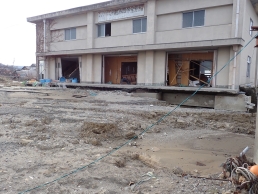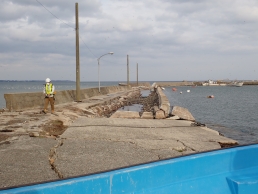2月14日に地盤工学会の能登半島地震調査団として、珠洲市の津波被害を調査しました。震災から6週間以上が経過していますが、珠洲市の復興は全く進んでいません。住民は見当たらず、復興のための重機も見当たりませんでした。珠洲市の場合、強い地震慣性力に加えて、地盤の液状化と津波襲来が同時に生じ、本当に言葉を失うような現場でした。液状化現象によりこんな高さまで地中構造物(マンホール)が浮き上がったのを見たのは初めてでした(至る所で浮き上がっている)。地震動が強く、さらに継続時間が長かったため地盤がひどく液状化したのだと推測されます。鵜飼港・飯田港の岸壁も大きく倒れ、港としての機能を回復するには多大な工費・工期が必要だと思いました。
On 14 February, as a member of the JGS (Japanese Geotechnical Society) Noto Peninsula Earthquake survey team, I surveyed the tsunami damage in Suzu city. More than six weeks have passed since the EQ, but the reconstruction of Suzu City has not progressed at all. The town was empty as residents had evacuated to other areas, and almost no heavy machinery for reconstruction work could be found. In addition to the strong seismic inertia forces, the ground liquefaction and the tsunami attack occurred at the same time, so the damage was severe. It was my first time to seen underground structure, such as manhole uplifted to such a height due to liquefaction. The quay walls at Ukai and Iida ports were also heavily collapsed, and it would need a great deal of construction work and time to restore the port’s functionality.
住宅の倒壊、マンホールの浮上がり
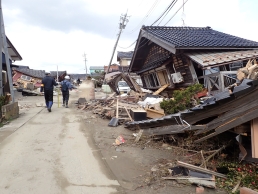
鵜飼大橋の橋側歩道の崩落。崩落した歩道が上流30mに流れていました(おそらく津波による遡上)
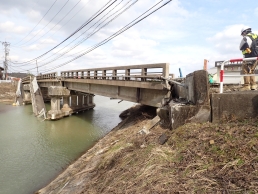
堤防に生じたクラック。堤防が元の高さよりもかなり低くなっていました。慣性力による堤体の変位に加え、支持地盤の液状化も影響したかもしれません。
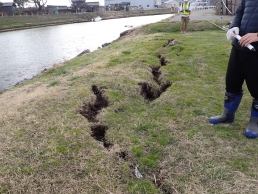
倒壊した家屋
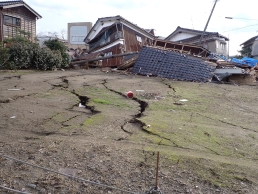
液状化によるマンホールの浮上がり(鵜飼港)
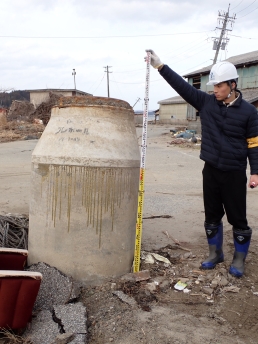
鵜飼港、津波による事務所ビルの被害
